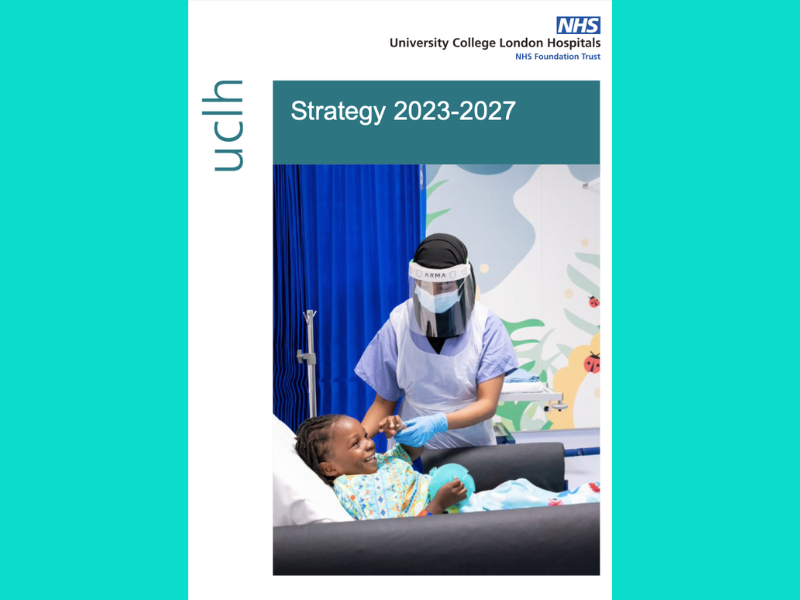University College London Hospitals NHS FT has published its strategy for the next five years, with a focus on improving patient services, transformation and innovation.
The new strategy focuses on five themes: to provide high-quality patient care, invest in a diverse workforce, deliver world-leading research and innovation, achieve excellence in education and training, and improve value, productivity, and sustainability.
On patient care, UCLH notes the development of its clinical strategy, where a focus will be placed on assessing clinical services and how to identify improvements needed in safety, clinical outcomes and patient experience.
“We will reduce waiting times for appointments, tests and treatments to deliver national performance targets for planned and emergency care by 2024/25,” the trust notes.
The trust highlights its outpatient transformation strategy published in 2021, that lays out how the trust wants its services to look and operate by 2026, with an aim to keep at least 25 per cent of outpatient consultations via telephone or video. Here, the trust adds an aim for more patients to be given the choice to have a patient-initiated follow-up (representing over five percent of outpatient activity) and an aim to reduce the number of follow-ups, where clinically appropriate.
To identify opportunities to improve waiting times, the trust places focus on the development of new models of outpatient care, with an aim to “improve speed and access to services, which integrate better with local partners, such as GPs, and give patients more control and choice over the service they receive”.
On patient flow, UCLH highlights: “We will focus on the continued delivery of our flow improvement plan including increasing early discharge planning, discharge support and reducing length of stay. This links to wider work on bed capacity and occupancy planning, and staffing and skill-mix planning, across all our acute inpatient areas.”
Population health management is a key focus, using data to target and improve health inequalities, specifically access and delivery within clinical services across the ICS.
To support capacity decisions, the role of technology is highlighted, with aims to make better use of digital to support patients, such as managing appointments, accessing healthcare records and streamlining care, by sharing records with all partners in a care pathway.
Here the trust notes an aim of utilising its patient portal MyCare that will integrate with the NHS app: “We will introduce more functionality, including the ability for our patients to manage their own appointments online. The portal will become our ‘tool of choice’ for electronic communications with patients and we will halve the correspondence we print and post. By 2025, over two-thirds of our patients will have access to MyCare and, for those patients, most of their electronic communication with UCLH will be via the portal.”
On introducing new technologies, the trust adds a need to “develop a robust evaluation process – this will ensure that, in the longer term, the improvements make a safe and positive difference to the way we work”.
The strategy also places focus upon investing in the workforce. The trust emphasises a need for succession planning for future leaders, the opportunity to share learnings, and implement new ways of working to reduce “inefficiencies in the way we work across UCLH”. Here the trust highlights to transform administrative processes, support remote working and deliver a cost saving of £28.3m over 10 years from the release of office-based estate.
The trust’s non-clinical transformation programme aims to make it easier for staff to manage workloads and reduce duplication; it notes an aim to implement a single view of all the tasks within the responsibility of the administration teams and adds: “By the end of 2023, new standard operating procedures for administration will be rolled out. By March 2025 we will have digitised between three and five core administration processes, using robotic process automation, or direct systems integration, removing the burden of repetitive tasks.”
The strategy moves on to research and innovation, stating: “As new ideas for adoption and innovation are developed, these will be channelled through different routes for review, support and potential funding. This includes the support of the commercial team, who will establish a ‘dragon’s den’ process to identify existing projects or new ideas that could be developed for commercialisation This will help us to learn from unsuccessful schemes and further drive innovation and investment as part of a continuous innovation process.”
Commenting on the strategy, David Probert, UCLH chief executive, states: “We have all faced many challenges over the past few years, both in the NHS and wider society. Now is a good time to not only recognise these challenges, but also celebrate UCLH’s strengths and look to a future where we continue to deliver top-quality patient care, excellent education and world-class research.”




